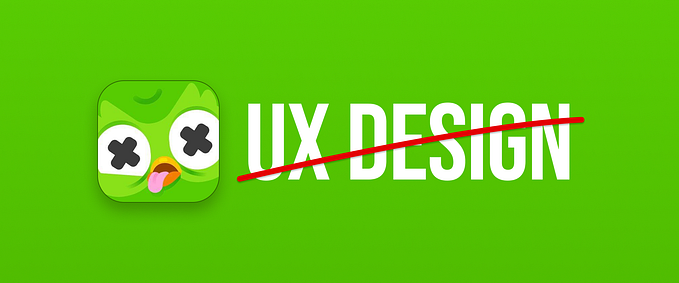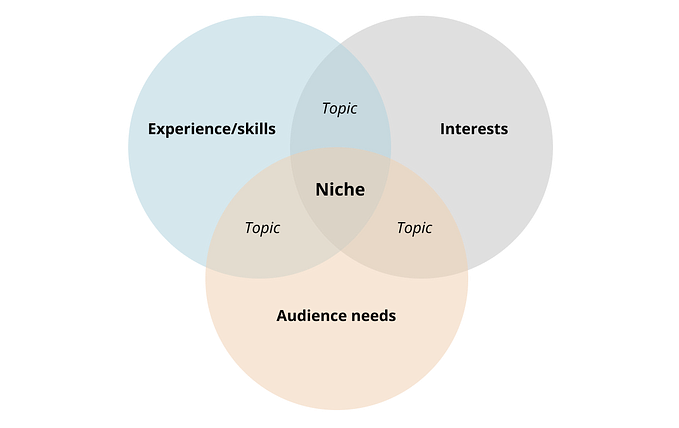Gender-inclusive design is the only way
Language matters.

In 2021, people are sensitive when it comes to gender. The problematic nature that society puts on traditional gender norms isn’t a niche anymore — it’s becoming part of the conversation.
Do you know what’s lazy writing? Using the same old generic masculine tone of voice to converse and convert. And you know what’s, even more, a terrible flow? When we as writers use abbreviations like (s)he or s/he throughout our text.
Working with a design consultancy has grown me. As a Ux writer and product consultant, I try my best to have inclusion be a part of my process. This can be something as simple as selecting diverse stock imagery for client presentations or using same-sex couples in all my illustrations. I try to avoid gender-specific pronouns. There are several ways of avoiding gendered sentences at our disposal. Since gendered-neutral pronouns have become more commonplace, you’re not sure how to use them, or what are they? Perhaps the most difficult aspect of adopting gender-neutral language is in the use of pronouns.
Let us consider the following sentences:
1. “To boldly go where no man has gone before…”
To make it gender-neutral, we want to get rid of the pronoun “he”.
We can re-write the sentence using…
…only a noun: “To boldly go where no one has gone before.”
Alternatively, a plural form could be used, such as:
2. “Today, the typical student knows what he wants to do when he graduates”
To make it gender-neutral, we want to get rid of the pronoun “he”.
We can re-write the sentence using…
…only a plural: “Today, most students know what they want to do when they graduate”.
All in all, the best option is to use plural pronouns. “Them”, “they” and “their” in informal writing and rewrite your text to avoid the problem in more formal writings.

I do take the opportunity to be inclusive when writing copy. Why? because I understand the emotional and psychological impact the design or web copy may have on the underrepresented. I know, as a writer, it is my moral obligation to make responsible changes. Help rectify, content design and product copy issues. As a result, I am re-evaluating and challenging my own biases and assumptions.
I recently found myself writing on a gender selection field while making an onboarding Webflow for a product. Of course, it was interesting to learn how binary these selection fields can be, which is usually driven by marketing needs to collect gender data to segment and sell to people more effectively.
Here I am with a guide, as I decided to do some research on the topic and felt inspired to share what I learned because our trans and gender non-conforming (GNC) friends also need some tech love.
What is inclusive design?
Some brands have risen to the challenge, whether by reframing their copywriting, introducing gender-neutral product lines, or completely re-tuning their strategies and planning, as the GNC world evolves and public appetite for gender-neutral branding grows, particularly within the hygiene, beauty, and clothing industries.
Coming back to our question, What is Inclusive Design? It is the process of designing products with the possibility of unpredictable and unexpected outcomes. It ensures that as designers/writers, we’re creating experiences that everybody can enjoy.
What’s the most common application for design inclusion? Yes, accessibility. Small tasks like selecting accessible color palettes to larger-scale efforts like adhering to WCAG 2.2. Designing for all gender identities means acknowledging this and creating experiences that do not discriminate based on gender.

The eye-roll factor: gender-inclusivity matters
As we live in a curious world I will reason this for you. Read this Vice report where 27% of teens in California identify themselves as gender non-conforming. Yes, they don't want to belong to the binary gender norms. That's just California ALONE.
With the changing trends, we are clear on the fact that perceptions of gender are rapidly changing. GNC individuals are increasingly finding themselves in situations where they must define their gender, and they aren’t always finding an option that will work in favor.
Gender identity — how an individual views their own gender, regardless of biological sex — and its relevance for product design are one area of inclusion that receives less emphasis.
Before proceeding ahead with the design examples, this is important to note: gender identity and gender expression are completely separate from sexual orientation.
Designing forms: Tips?
If you’re going to collect gender data, make sure that the audience knows why you’re collecting it, and how it will be used.
The collection of gender data can be a stressful and traumatic event for some trans and GNC people, particularly if they are still discovering their own gender identity. We wouldn’t want anyone to be uncomfortable or concerned that their gender information may be misused.

Here’s my tip: use language that’s welcoming, clear, and reassuring.
On the left are two examples of design forms. The form on top assures two aspects:
- Ensures user that their responses are kept private.
- Notice how the form on top offers a tooltip(?) explaining why they’re asking for the information.
While the form on the bottom is complex. Here is my design ‘glitch’ intel:
- The form is not information-sensitive. No tooltip.
- Whether the site needs to know gender or sex, the options given are not inclusive.
How to use gender-inclusive in language
UX Writing allows using language as a tool for inclusion. We saw the gender-neutral pronouns example above. It’s important to remember, though, that gender is an important consideration for microcopy in any language (even though the considerations change with each language and culture).
1. Gendered baggage and gender-neutral alternatives
Language evolves as it expands, morphs, and adapts to suit the demands of modern life. That’s one of the many things that makes it enjoyable. Gender-neutral pronouns have been added to the English language as part of that evolution.
This year 2021, Google gives gender-neutral alternatives to gendered words. Some words, often nouns, come with gendered baggage. We can always identify gender-neutral solutions with little thought, research, and effort.
The most obvious one is “man”. Writing man is a great choice when writing about a man. There’s nothing wrong with writing about men, either. Man, on the other hand, becomes a careless option when writing about people in general, mixed groups, or when combining idioms. May the best man win? No, the best person will. And so forth.

The above image is a few other widespread examples to illustrate what that can look like in practice. For Digital products the safest and most scalable solution is to avoid addressing people with the gendered baggage.
2. Ask for preferred or chosen pronouns
Meeting new people is awkward but using the wrong pronoun to refer to someone is more awkward because pronouns are about respect. By using the right pronoun, you can show that you see and respect their identity.
Really, it’s about creating a culture where asking people about their pronouns is just a normal, natural part of introductions. Something like this:
“Hello, the new person that I’m meeting at a cocktail party. I’m Jacob.”
“Nice to meet you. I’m Andre. What pronouns do you use Jacob?”
“I use they. What about you?”
“I use he, thanks for asking. Anyway, um, some weather we’re having today, huh?”
Asking about pronouns will not solve your social awkwardness issues, but it will definitely make you a nicer, more empathetic human being...
As for UX writing, if we call the user with their names within the product or in auto-generated funnels, we must make sure the name we’re using is actually the name the user wants us to use. Depending on which platforms you use, you may have access to a student or colleague’s legal name. Treat this as confidential data and do not employ it unless there is a specific need for it to be used.
MasterCard has created an inclusive experience for transgender, non-binary customers to avoid painful checkout and payment situations.
3. Avatars and inclusivity
Don’t use gender assumptions in avatar or profile settings. Read more about how to design gender-neutral avatars by using identicons, initials, or animals.

What is it? Using representations of animals in place of humans.
Examples: Users who access a document via a link rather than a direct invitation are assigned an anonymous animal by Google Docs. In addition to expected animals like penguins and otters, there are also extinct or mythical animals including chupacabras, jackalopes, and quaggas. If you’re lucky you can even get a Nyan cat.
4. No unnecessary mention of marital status, gender, and looks
Do you write “female developer”, think again do you write “male developer” in the same context? (something I personally used and was corrected too)
Pause. Re-think why and how you refer to someone’s gender in your writings.
Avoid forcing users to choose between Mr. and Mrs. United Airlines became the first airline to introduce non-gender-specific “Mx” on ticket bookings. In the era of GDPR — think about why you are asking for titles at all. Do you really need it?
Gender-inclusive design is the only way
Think of the above as the start of a conversation. While these are just a few aspects and I am yet to touch upon Artificial Intelligence(AI) and Voice User Interfaces(VUI).
The path to true inclusion is through conversations, mutual understanding, and empathy. UX Designers and UX Writers can provide the right fit between experiences and users.
Linking more cool stuff for content design inspiration:
- When you’re mixed race, just one box is not enough.
- UX Booth’s article on the bias for Mr. as the first honorific in dropdown menus.
- Miriam Webster and the Oxford English Dictionary have both added Mx. as a gender-neutral honorific. Do your forms allow for it?
- Think about whom your users see when they interact with your product. Vice’s Article on Identity, real people, and really beautiful work uses a stock photo library of trans and non-binary models.
- The American Association of Retired People has discussed the ways wheelchair ramps benefit us all. What unintended benefits of being more inclusive can you imagine?
- Doing UX: Doing Gender
- Gender Inclusive Language Style Guides
Final Word: Maintain a growth mindset. You may make mistakes, and you may not know everything (right, John Snow?); the key thing is to learn from them and correct/solve them as soon as possible.








